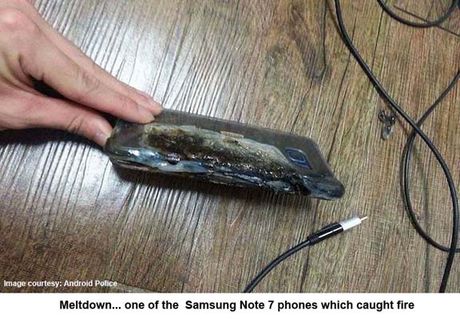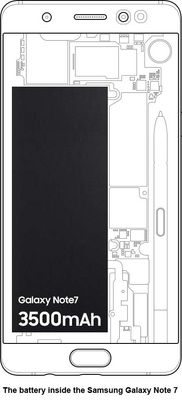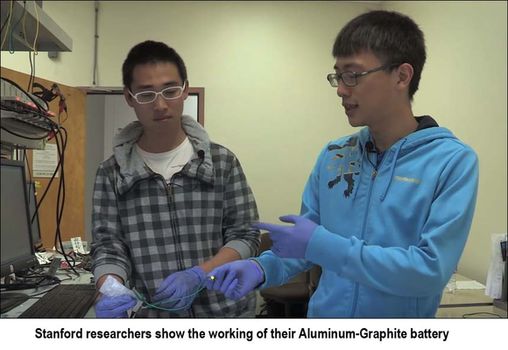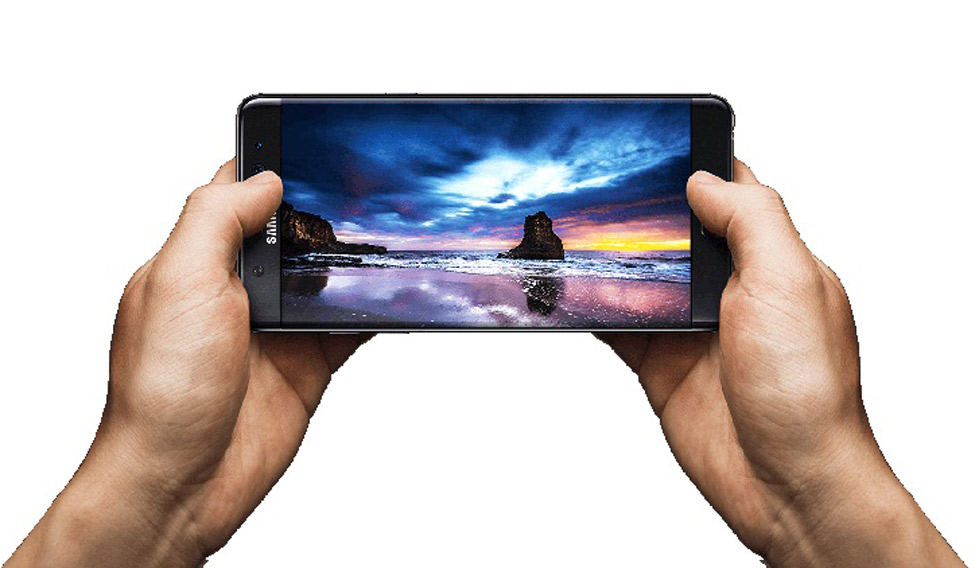Dear guest, your safety being of utmost concern and in view of the regulations from DGCA, guests are not allowed to carry Samsung Galaxy Note devices in checked in baggage. You may carry the same in hand luggage; however usage, including charging of the mobile battery on board flights is strictly prohibited. Thank you for your cooperation.
Passengers booking flights have been receiving emails, identical to, or very similar to the above for a few weeks now. India was one of the first countries to impose a ban on carrying the Samsung Galaxy Note 7 mobile phone onboard, possibly because an Indian carrier was involved in an incident—a Galaxy Note phone igniting in the cabin baggage of a Singapore-bound passenger.

Samsung announced recall of some 2.5 million units of the Note 7 that were manufactured before September 15 — 1 million of which were with customers after almost 35 instances of the phone melting under heat. For a specific model and an otherwise great handset, to be named worldwide by multiple agencies for its danger, is a huge marketing disaster. Samsung, however, has been lauded for its prompt action.
This is an added problem of the industry's own making. Many high end phones like the Galaxy Note 7 and the iPhone have batteries which cannot be removed by the customer. So a recall means the entire phone goes back. Samsung can hardly resell the millions of defectives after refurbishing the battery. Were phone makers to sensibly make all phone batteries removable, Samsung could have just provided free battery replacements and saved millions of dollars in replacing the rest of the phone. Maybe they'll learn a lesson and switch to removable batteries. Here's the irony—these makers say they make the batteries unremovable to ensure users don't spoil their phones and void warranties by slipping in cheaper batteries once the first one conks out. Look who's talking!
It is not the first time such a thing has happened. In 2009, Nokia recalled some 46 million handsets after there was a perceived risk of a short circuit. iPhones catching fire in their owners' hands have been a fairly regular source of striking news photographers. Apple has been lucky: such incidents were too spread out to fix blame on the device. It was more comforting to blame the owners: they must have done something wrong like overcharging their phones or using them while they were charging.
Has any phone maker ever warned against these actions or even suggested that there was some risk involved? Of course not, bad for business.
Yet the harsh fact remains: phones, tablets, laptops, music players....indeed most compact and portable electronic devices use batteries based on lithium-based technology which is known to be risky and inflammable. Why did nobody tell us? Well, it's been there in the literature, all the time.

Inherently flammable
After last month's Samsung episode which can, like a Perry Mason or an Agatha Christie mystery, be called 'The Case of the Combustible Phone', I looked up web experts on lithium ion batteries, including a respected site called TheElectricEnergy.com. It showed me how the lithium-ion battery was very similar to the Leclanche cell we studied in school but with a compound of lithium as the positive electrode (or anode), carbon or graphite as the negative pole ( or cathode) with a salt of lithium as the semifluid in between, to drive the electric current. It explained why makers of portable electronic equipment preferred Li-Ion to other chemicals including the lead-sulphuric acid combo of the original battery cell. It has very high energy density— that means a small area gives a relatively big electric energy which we measure in milli Ampere Hours ( mAh). At the end of a long and detailed article on the website, there is a chilling footnote: "There is a small chance ( two or three in a million, 0.0002% to 0.0003% ) that the cell will burst into flames".
This is not some ground-breaking new discovery. Scientists have known about the tendency of lithium ion cells to spontaneously catch fire for as long as they have been sold—roughly since Sony designed the first commercial units in 1991. They, the makers and the sellers, knew it all the time. We the customers are the ones who have been living dangerously. The Samsung incident is in no way unique. It only lends urgency to the whole issue of battery safety.

So, why do most batteries remain cool while a very small number overheat and ignite? There, in a small but significant way, the consumers have to take some of the blame. We keep telling phone makers, we want batteries to last longer and longer, even as the graphics and video-laden apps we run on the phone suck more and more power. This is a clear contradiction in demand and is scientifically impossible unless we are ready to lug phones with giant batteries, larger than the phones themselves.
Then, we demand another unachievable quality from our phones. We want the screen bigger and bigger (The Samsung Galaxy Note 7 has a 5.7 inch screen; some new phones have screens almost touching 7 inches, making them more tablet than phone)and at the same time we want the phones to get lighter.
In an arena of intense competition, phone makers must listen to customers, or die. So they try and optimise the heaviest part of the phone, its battery. They increase its energy output from 1,500-2,000 mAh to something like 3,000–4,000 mAh, without increasing the battery weight or size. How? By shaving of a millimetre here and a millimetre there by making things like casing and partitions as thin as possible. There is a separator between the positive and negative poles of the battery. If you make this too thin, you risk it breaking when the battery suffers a shock, like when the phone is dropped. When the separator breaks, the plus and minus parts of the battery touch, creating a short circuit. We all know what happens when the two wires in a household device like a fan or mixer-grinder or table lamp short. There is a spark and you get an electric shock. In a lithium ion battery, a short ignites the fuel between the poles of the battery and there is a small fire which can soon melt the phone (ironically, much of it is plastic, to save on weight).
This, as far as I can make out, is the most plausible explanation of why some phone batteries burn. It also explains why most survive— till they endure some sort of shock or jolt. This is true to almost all phone batteries, not just Samsung.
It is nice to know why these things happen. But what are phone makers doing about it? Actually, very little. Lithium is the lightest of all metals... it can float on water. So in the foreseeable future, phone makers will continue to make phones powered by lithium ion batteries regardless of its known hazards.

Alternative technologies
Scientists are working on alternative technologies that eliminate lithium and its compounds. At Oregon State University, a team is working to create potassium ion batteries. Others have experimented with sodium ion. Sony, which holds the lithium ion patent, is now trying out sulphur as an electrode instead of lithium.
At Stanford University in the US, Prof Hongzie Dai and his students claim success with aluminum ion batteries, with graphite as the other pole. They have put out a video where they drill a hole through a live battery and it does not stop working or catch fire... one up over Lithium.
But the sad fact is none of these worthy alternatives is anywhere close to commercial-scale realisation. For anyone to succeed, massive infusions of funding are required. There was a small window of opportunity: electric cars. Tesla is leading this wave and obviously very large batteries are required for electric cars. But instead of trying to fund research for an alternative to lithium, Tesla founder Elon Musk has decided to stick with lithium ion and is setting up a Gigafactory to produce lithium ion batteries for half a million electric cars. Without the oxygen of industry support, lithium-alternates will never be fast-tracked. Phone and gadget makers will continue to churn out devices with slimmer, lighter, more powerful lithium-based batteries for the foreseeable future. And we the consumers have to like it or lump it. It will take a bigger disaster than Samsung's current worries to force a fundamental change in battery technology. 'Nobody died, OK?'
Footnote: Samsung says in a September 29 announcement: The Director General of Civil Aviation (DGCA) has issued an advisory to the travelling public and airline companies today, lifting the restrictions on in-flight use of the new Samsung Galaxy Note 7, purchased after September 15, 2016. Customers can identify the new Galaxy Note 7 with the ‘green battery icon’. Devices displaying this visual icon are safe to charge and use during the flight.
The company also assures it has not sold a single unit of the Galaxy Note 7 in India.




